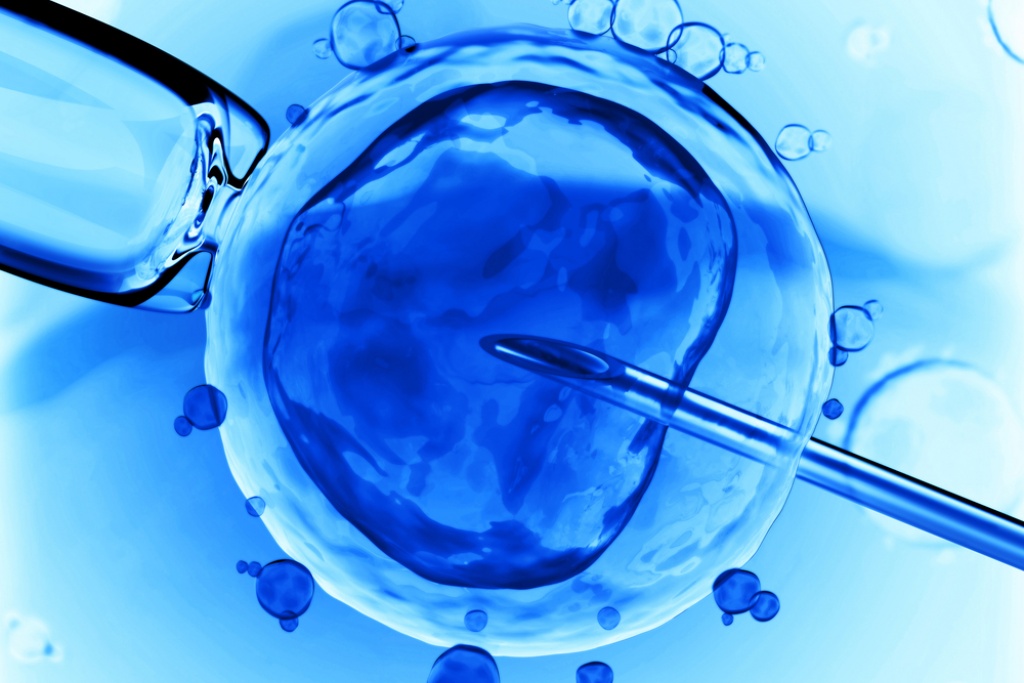
n-vitro fertilization (IVF) is a process by which an egg is fertilized by sperm outside the body. First test-tube baby insemination method was created as a major treatment of infertility. Collected data made clear that possible risks may occur throughout the procedure, and depend on the specific step of the procedure: during ovarian stimulation, hyperstimulation syndrome may occur. During egg retrieval, there’s a small chance of bleeding, infection, and damage to surrounding structures like bowel and bladder (transvaginal ultrasound aspiration) as well as difficulty breathing, chest infection, allergic reactions to meds, or nerve damage (laproscopy). During embryo transfer, if more than one embryo is transferred there’s always a risk of multiple
pregnancy, infertile couples may see this is good news, but there may be risk to the embryos and to the mother such as premature delivery. Ectopic pregnancy may also occur if a fertilized egg develops outside the uterus, usually in the fallopian tubes and requires immediate destruction of the foetus. We can conclude from here that it is very important to make proper preparation researches to avoid and correct pathology which can reduce the possibilities of becoming pregnant. The best solution to solve infertility problems is in-vitro fertilization method. Babies born through this method are called "Test-tube babies", because early biological experiments involving cultivation of tissues outside the living organism, from which they came, are carried out in laboratory glass containers.
In vitro fertilisation could be performed by collecting the contents from a woman's
fallopian tubes or uterus after natural ovulation, mixing it with semen, and reinserting into the uterus. However, without additional techniques, the chances of pregnancy would be extremely small. Such additional techniques that are routinely used in IVF include ovarian hyperstimulation to retrieve multiple eggs, ultrasound-guided transvaginal oocyte retrieval directly from the ovaries, egg and sperm preparation, as well as culture and selection of resultant embryos before embryo transfer back into the uterus. Ovarian hyperstimulation is where a regimen of fertility medications are used to stimulate the development of multiple follicles of the ovaries in one single cycle, resulting a release of a larger-than-normal number of eggs through transvaginal oocyte retrieval. Embryologist makes micromanipulation-injection of intracytoplasm sperm in case of spermatozoids’ morphological function pathologies. Only several spermatozoids are needed for insemination. Different protocols and different medicines are used to stimulate woman’s egg considering woman’s age, hormonal and health condition. The duration of use the medicine is stopping according ultrasound and hormonal research. It is satisfactory to receive 6-15 eggs.
Transvaginal oocyte retrieval is a small ambulatory intervention and is controlled under surveillance of echoscopy and anaesthezation is needed in few cases only. The eggs are retrieved from the patient through a transvaginal technique called transvaginal oocyte retrieval, involving an ultrasound-guided needle piercing the vaginal wall to reach the ovaries. Through this needle follicles can be aspirated, and the follicular fluid is handed to the IVF laboratory to identify ova.
Intracytoplasmic sperm injection (ICSI) is where a single sperm is injected directly into an egg. Following this procedure first baby was born in 1992. Its main usage as an expansion of IVF is to overcome male infertility problems, although it may also be used where eggs cannot easily be penetrated by sperm, and occasionally in conjunction with sperm donation. Micromanipulation allows using sperm retrieved from MESE, MESA and AESA surgery ways. Retrieved embryos are cultivated during several days in incubator and they are transferred in uterus, where they continue to develop.
Embryo passes through the development stages and it is transferred in uterus 2-3 days later. Sometimes it takes 5-6 days, when according prescription embryo cultivation - grow to blastocyst is needed. This manipulation is painless and is no need of especial preparations for it. We put embryos piercing the vaginal wall to reach the ovaries. Procedure finishes involving an ultrasound-guided control. The quantity of transferred embyos depends on the couple’s age, uterus condition, embryos’ quality. We mostly transfer 2-3 embryos. This way rate of getting pregnant grows, but also grows the possibility of multimature pregnancy from what we have to get rid of. It is possible to freeze the rest of the sperm and use it later. Since 12 days from HCG hormone transfer into the vein blood we can learn whether pregnancy came or not. A week later we can learn about through an ultrasound research.